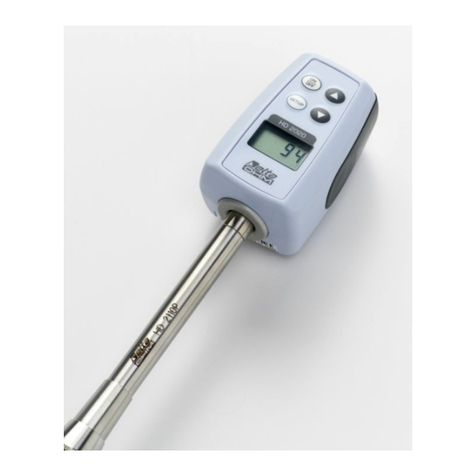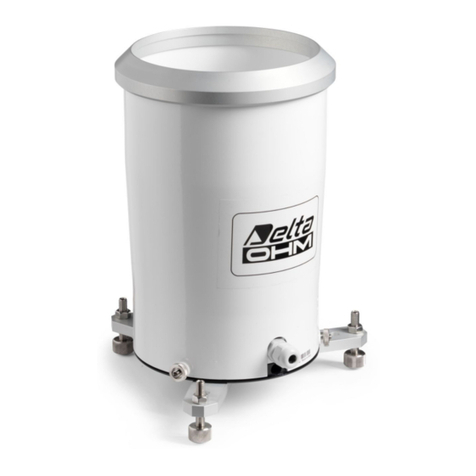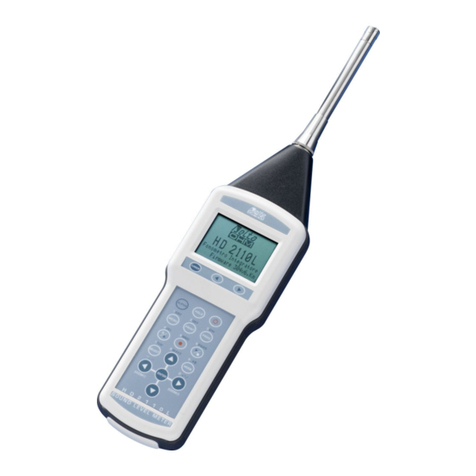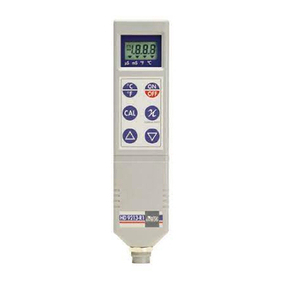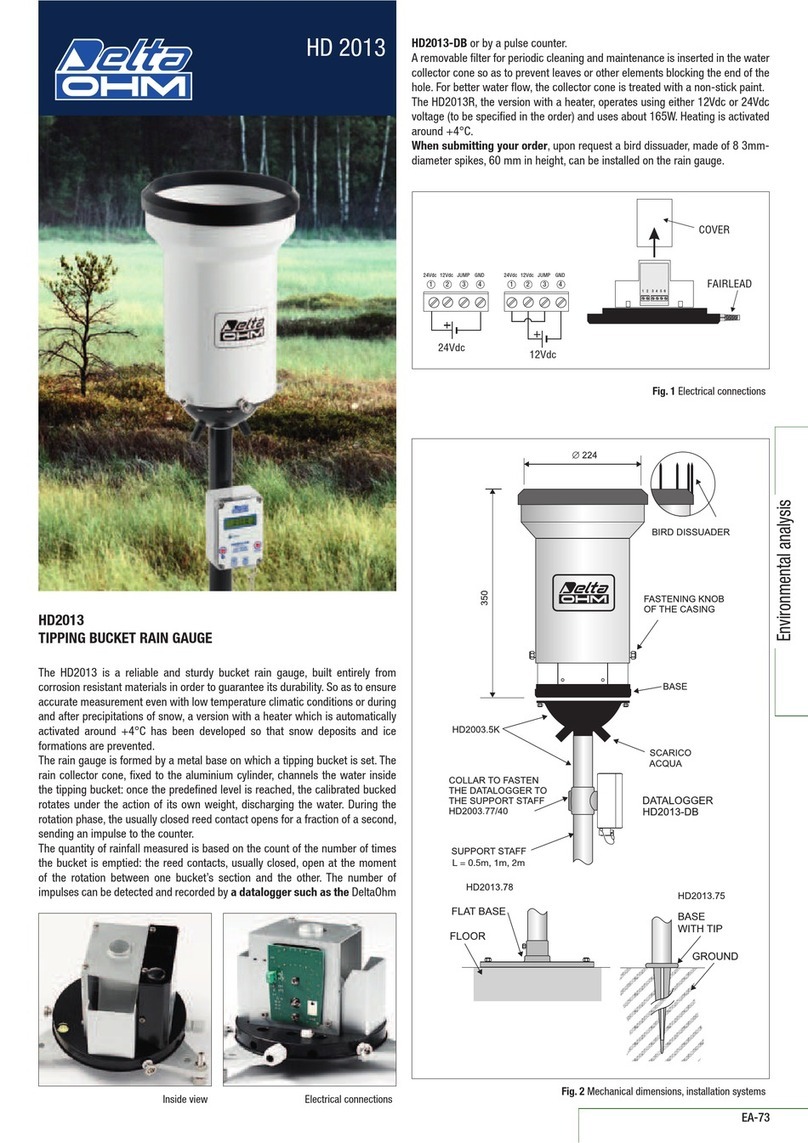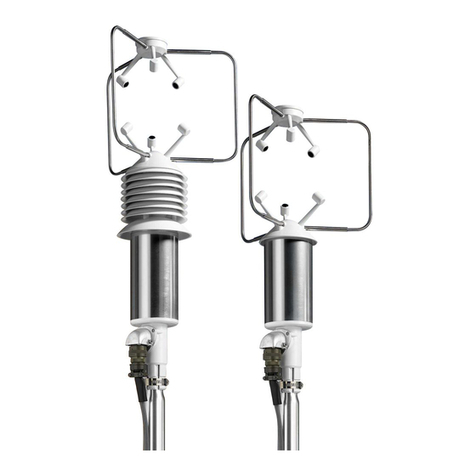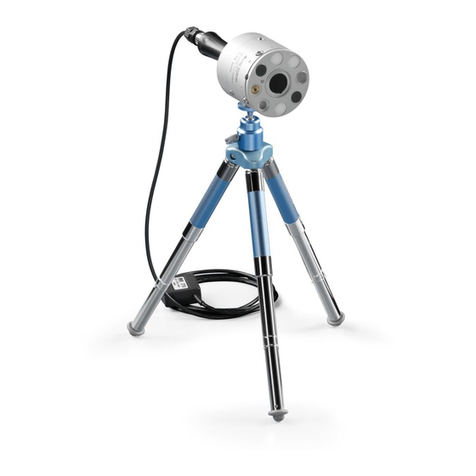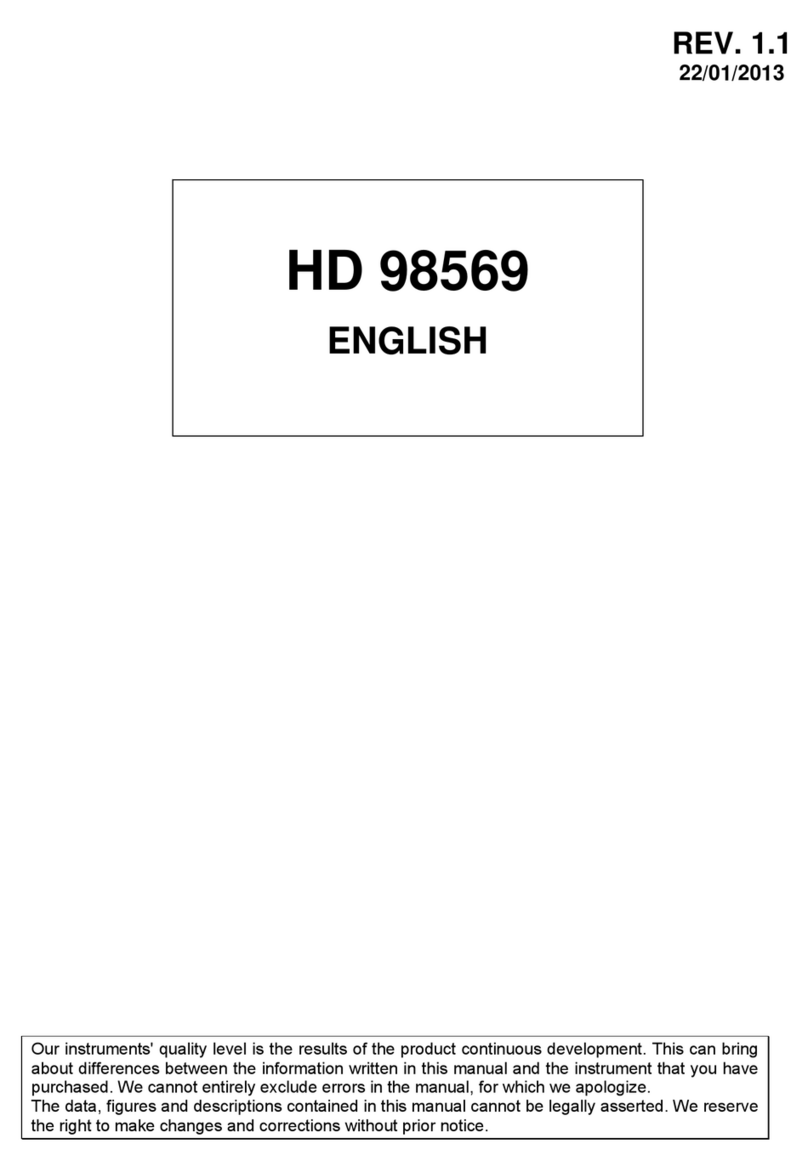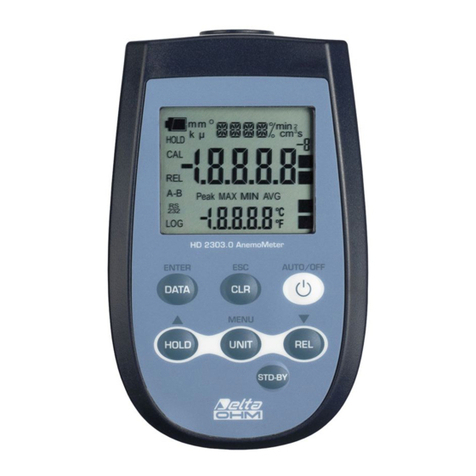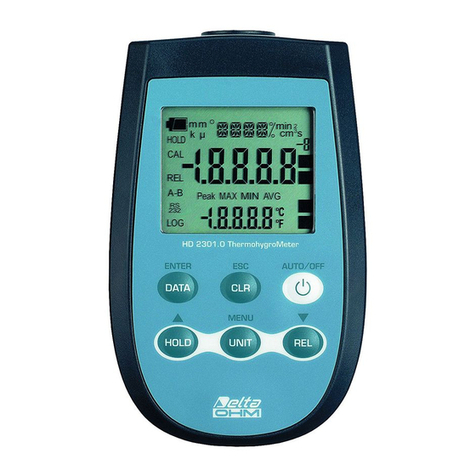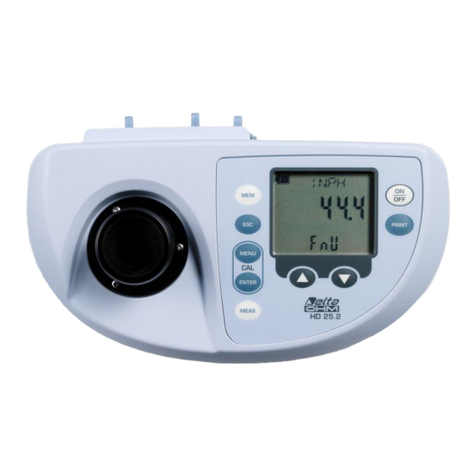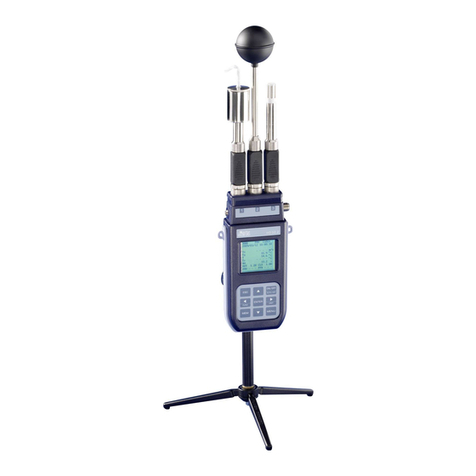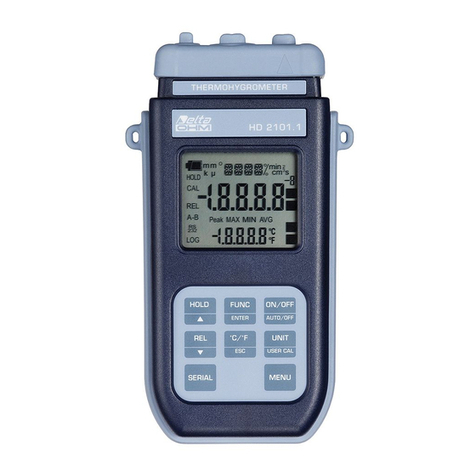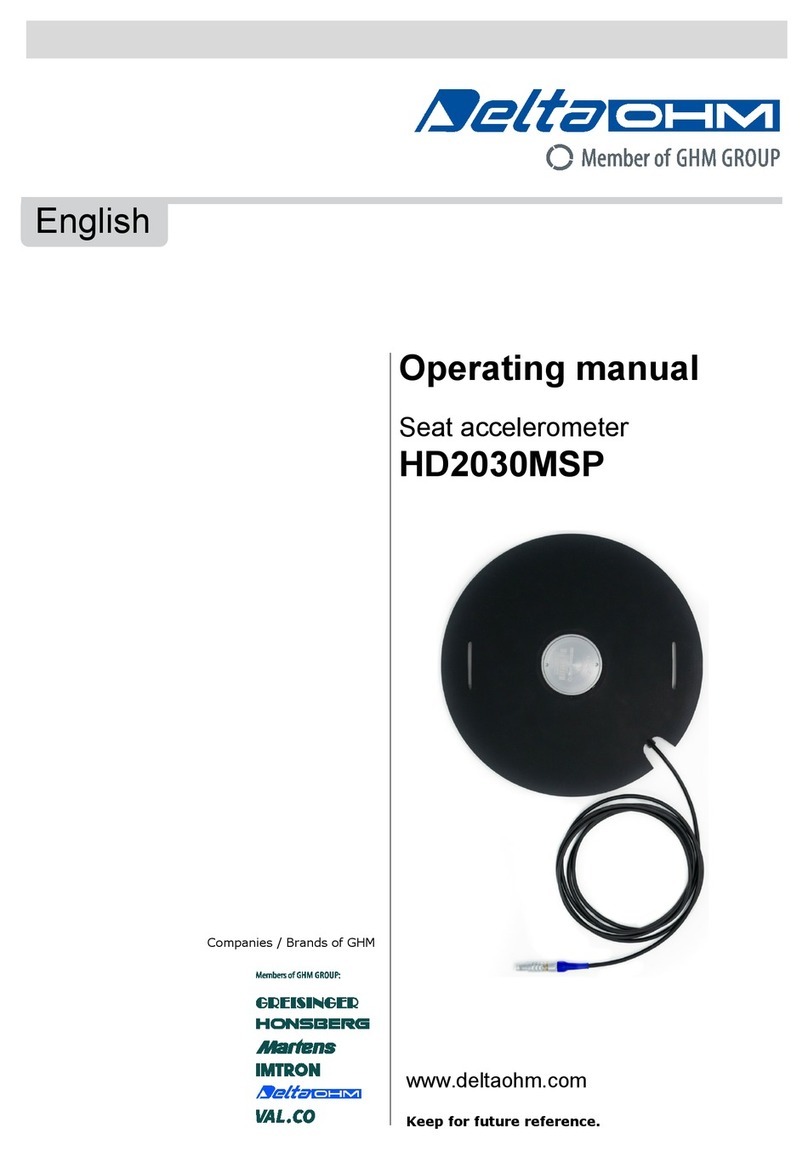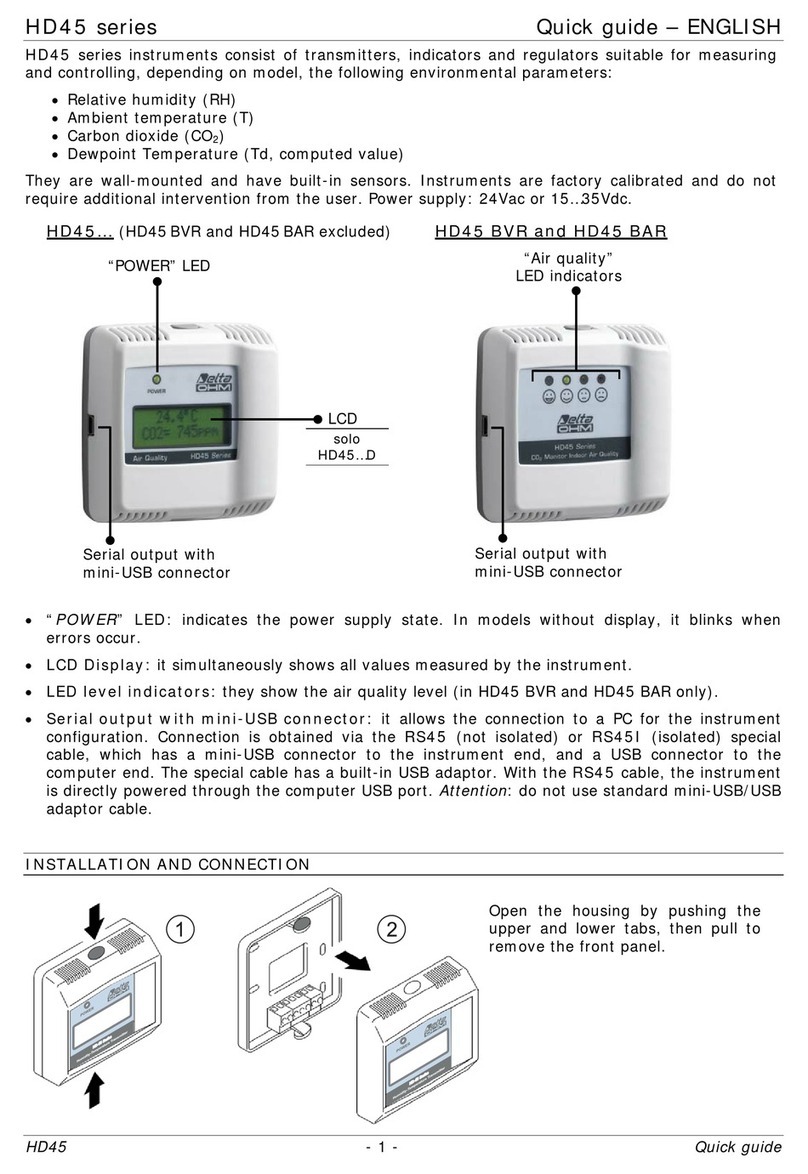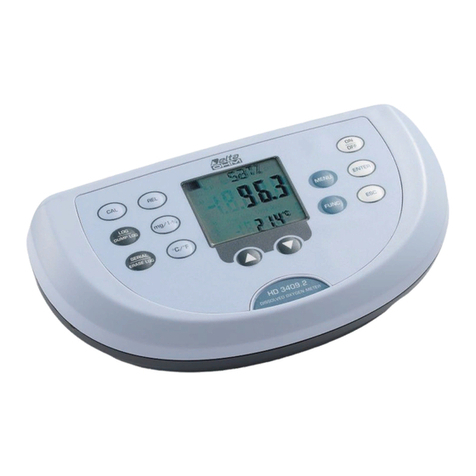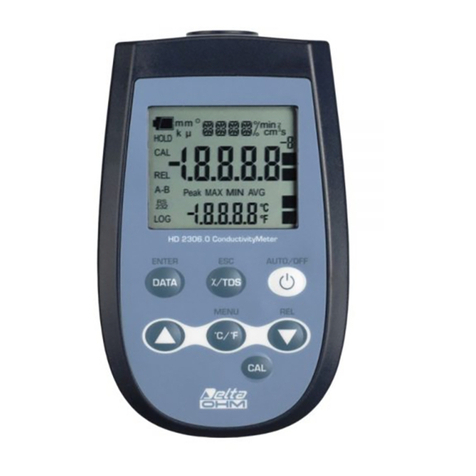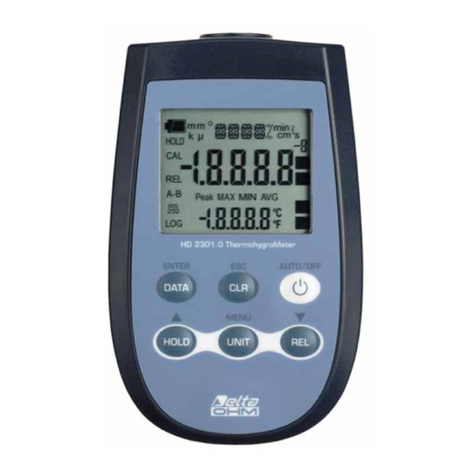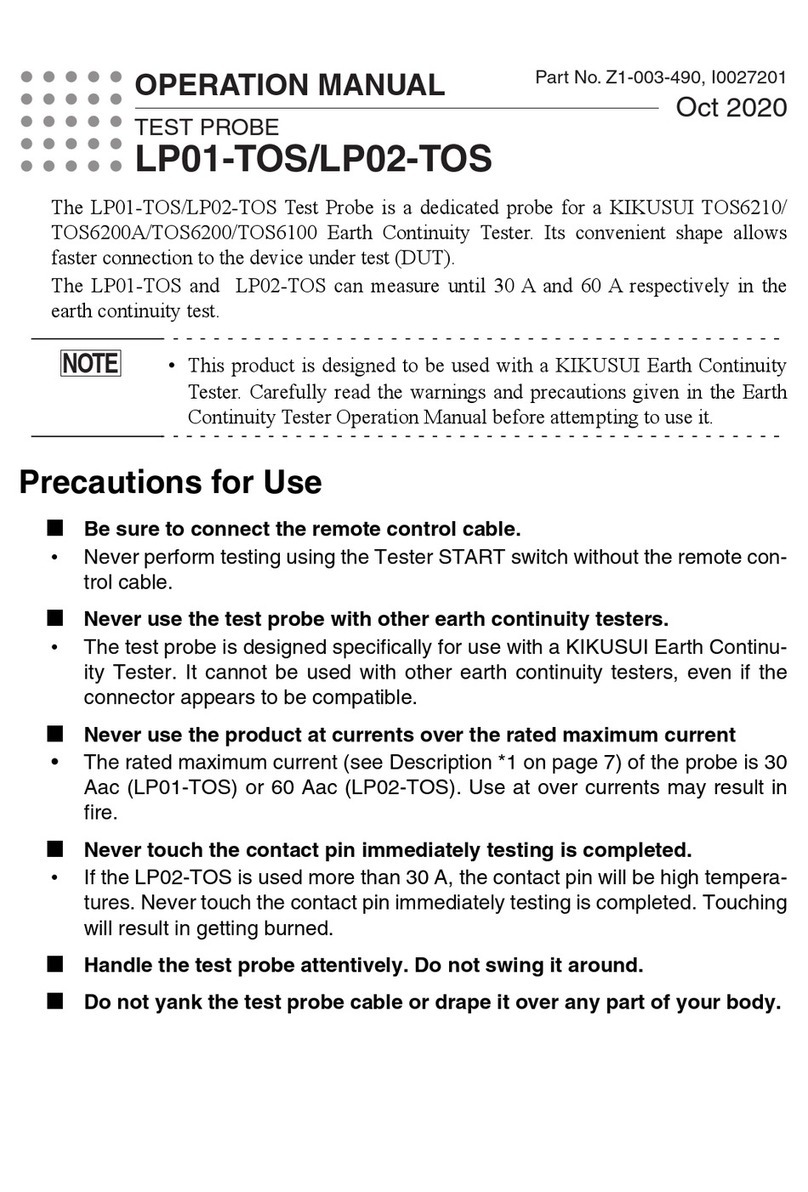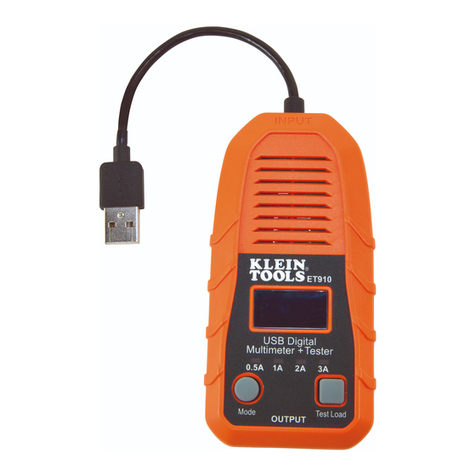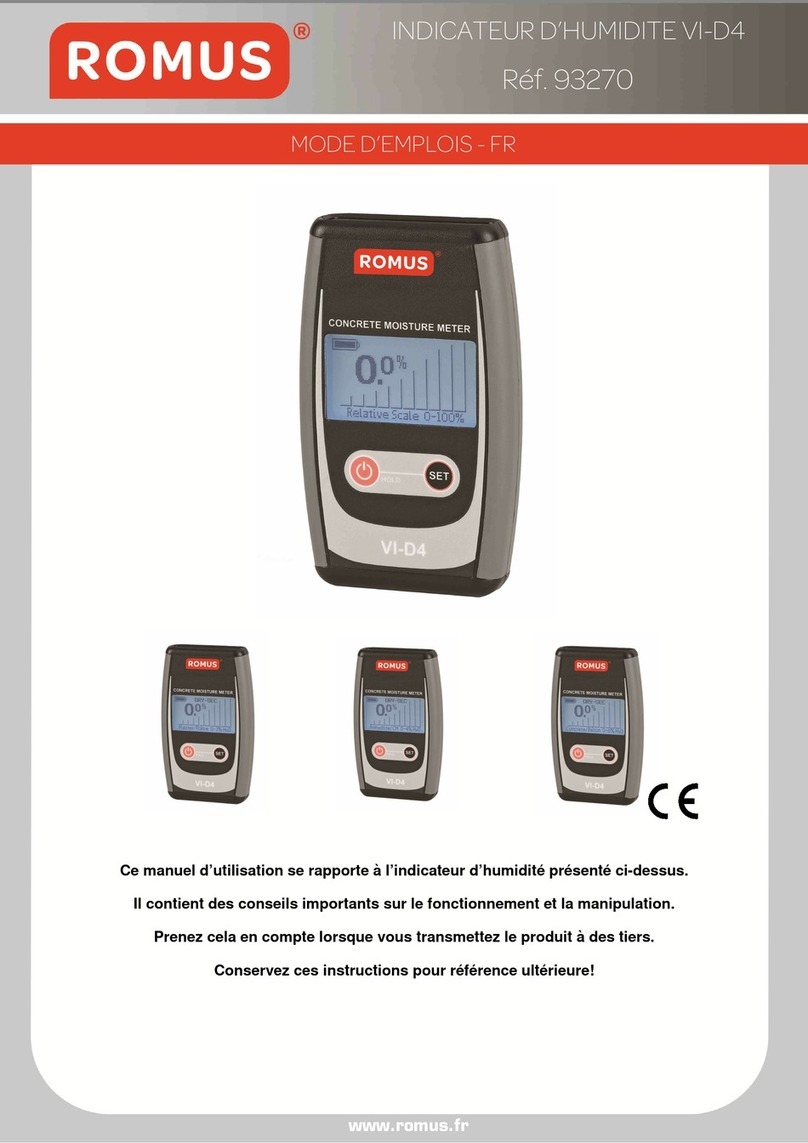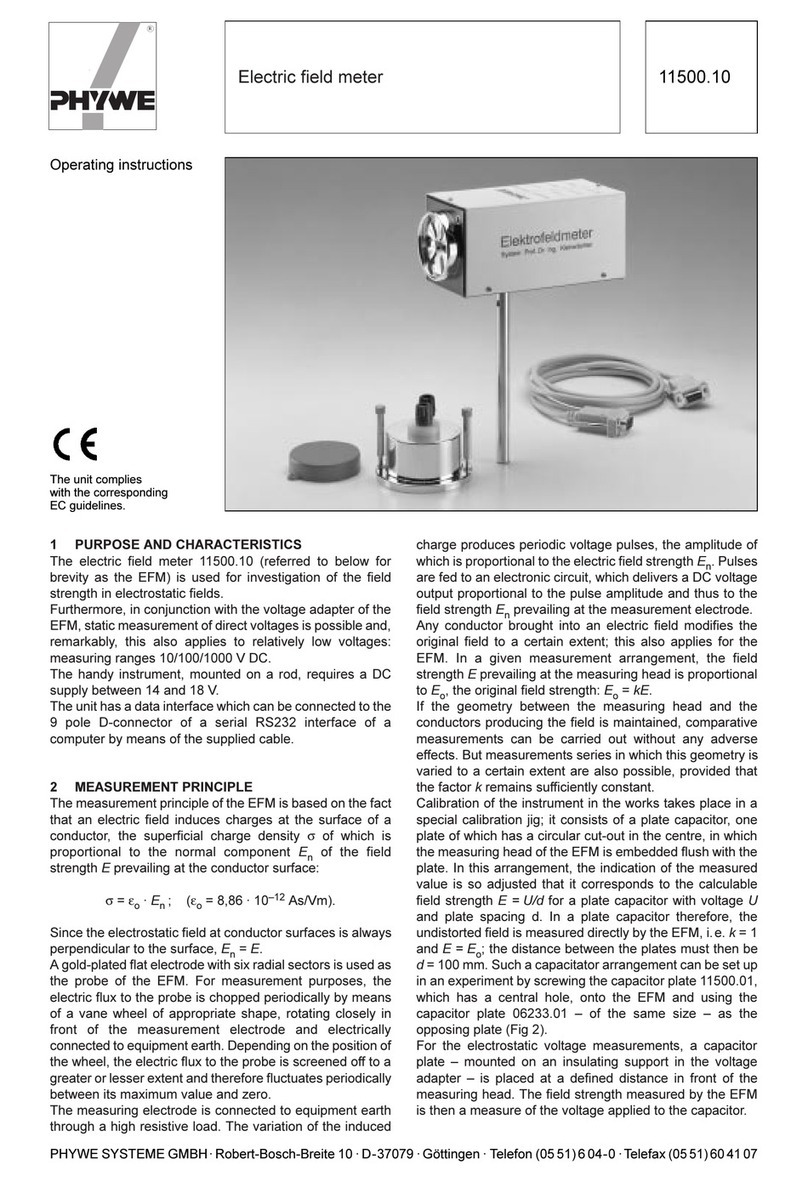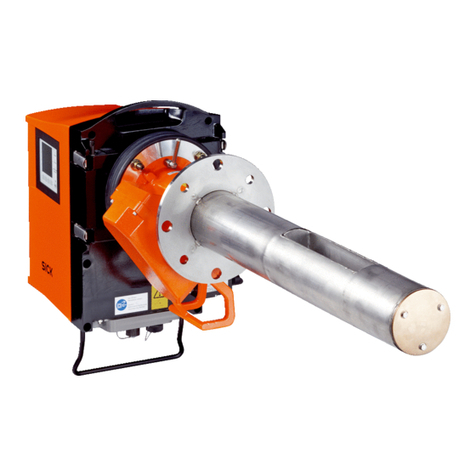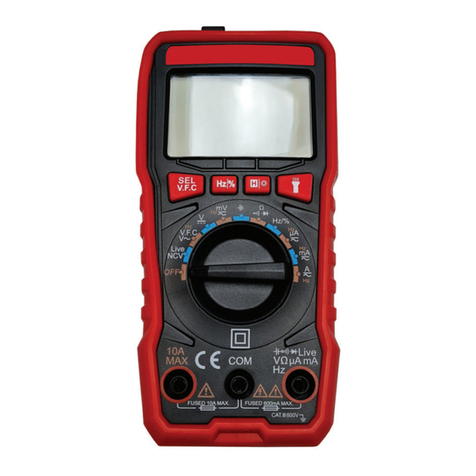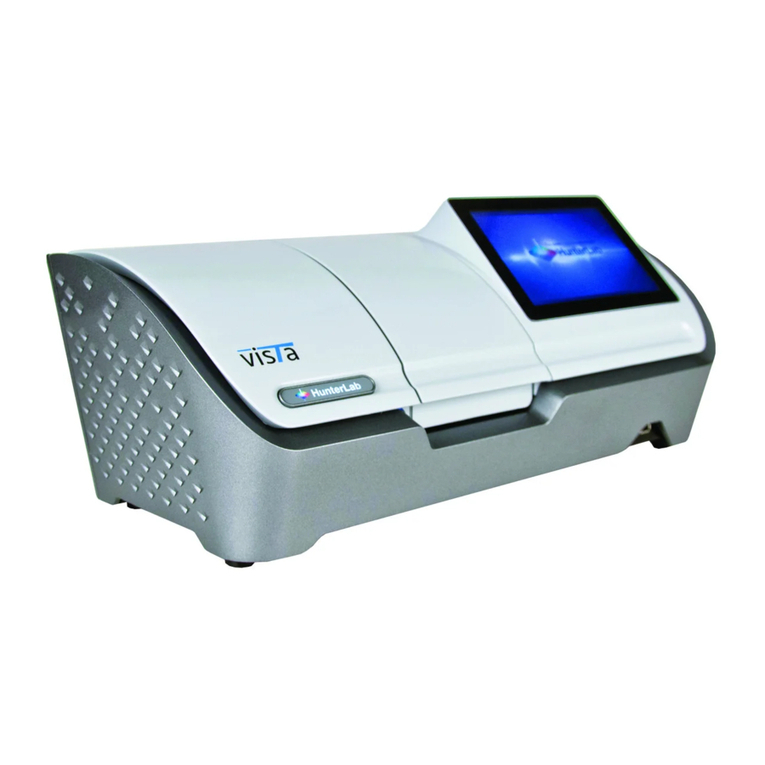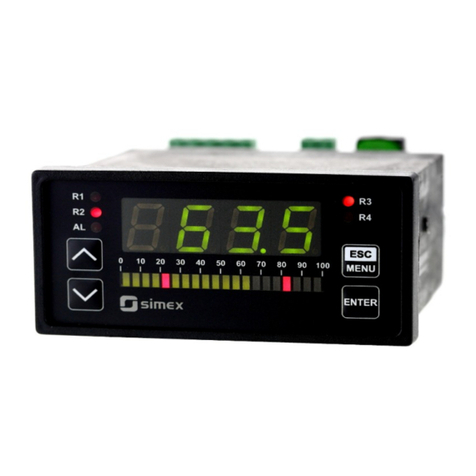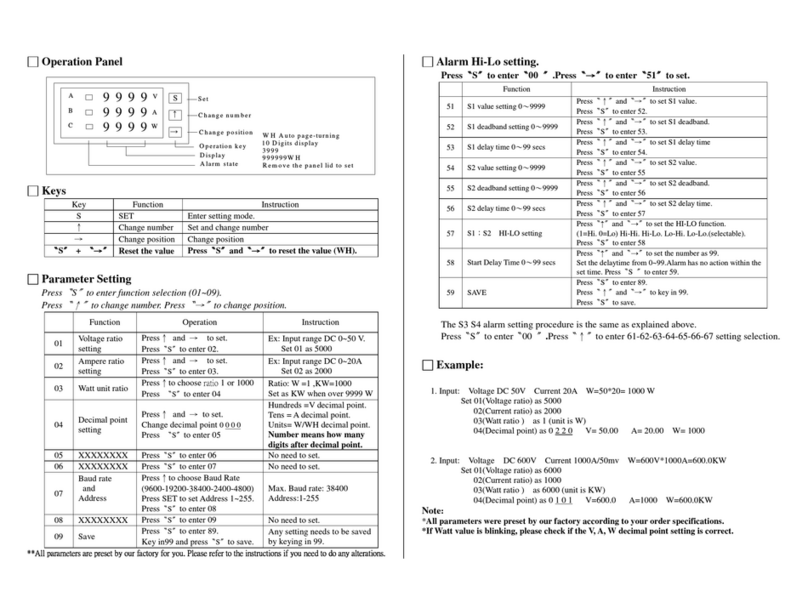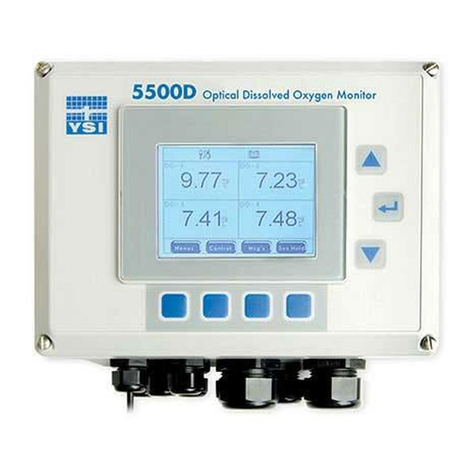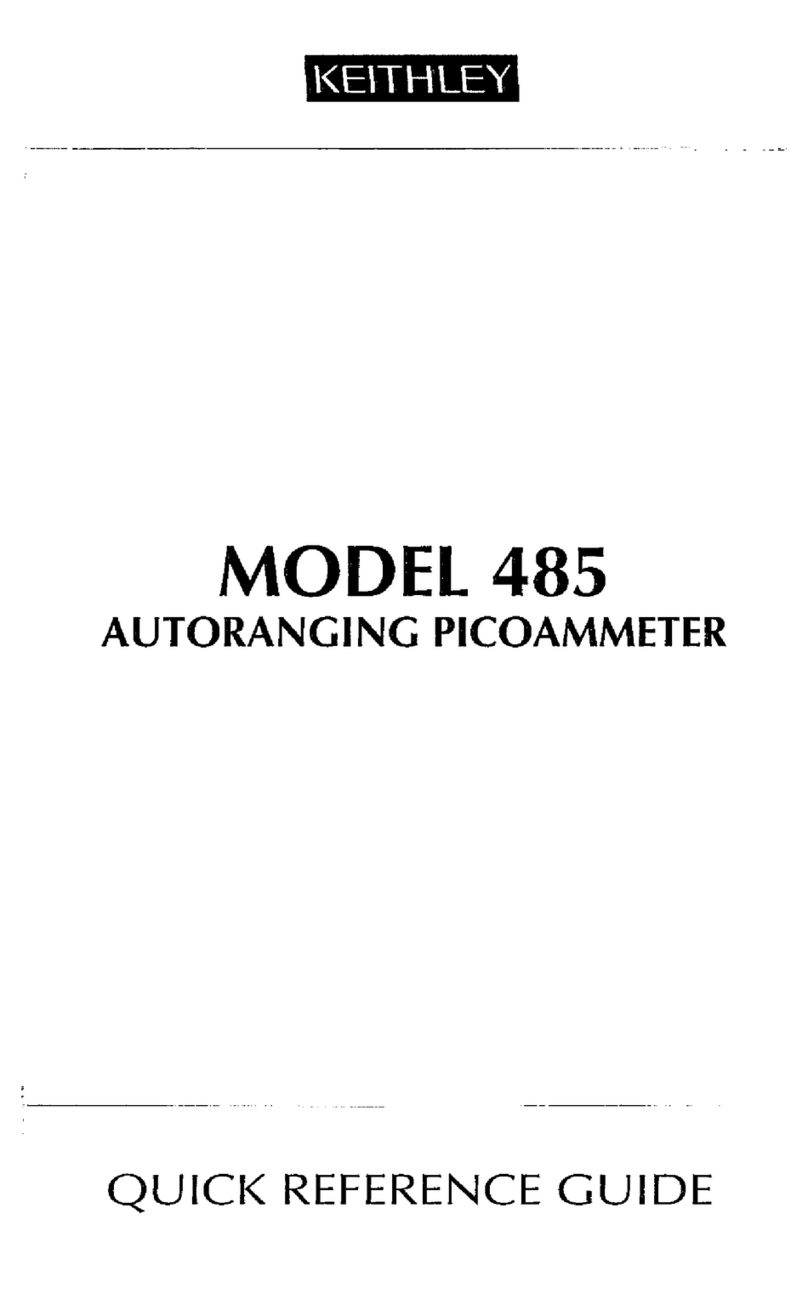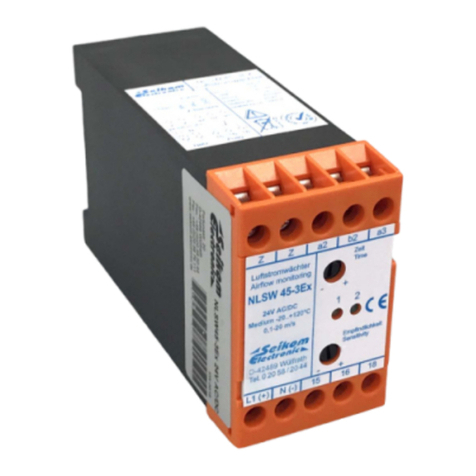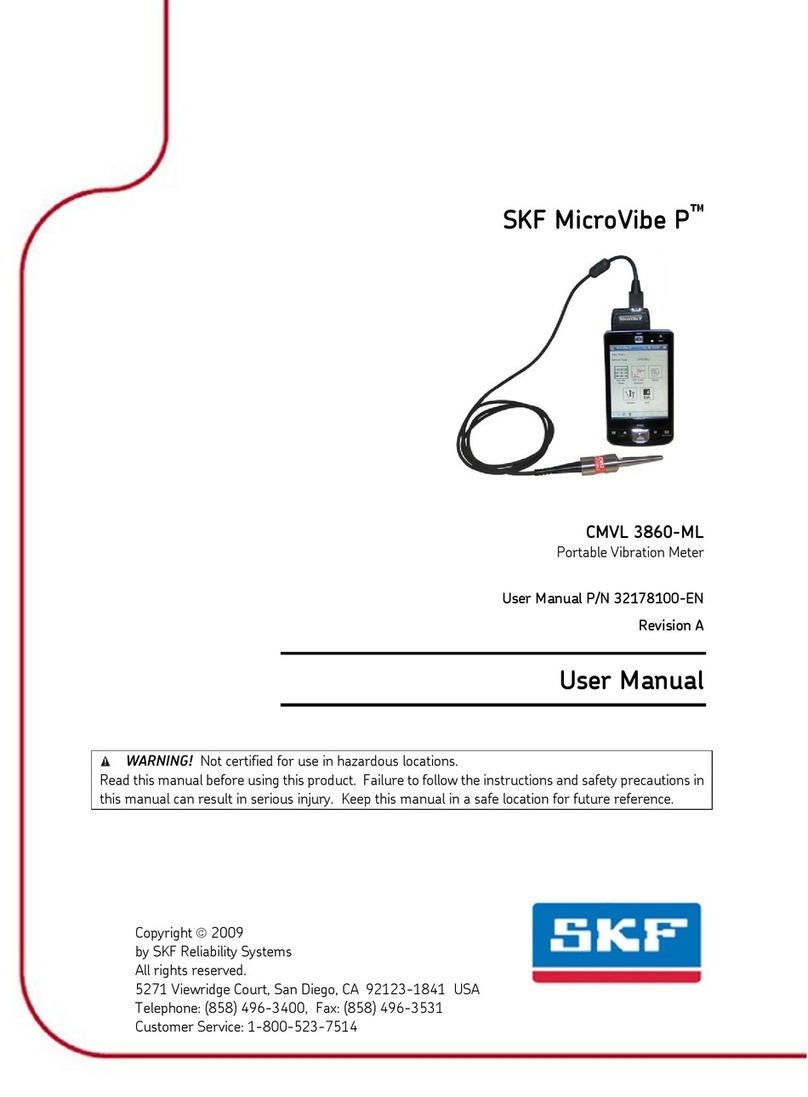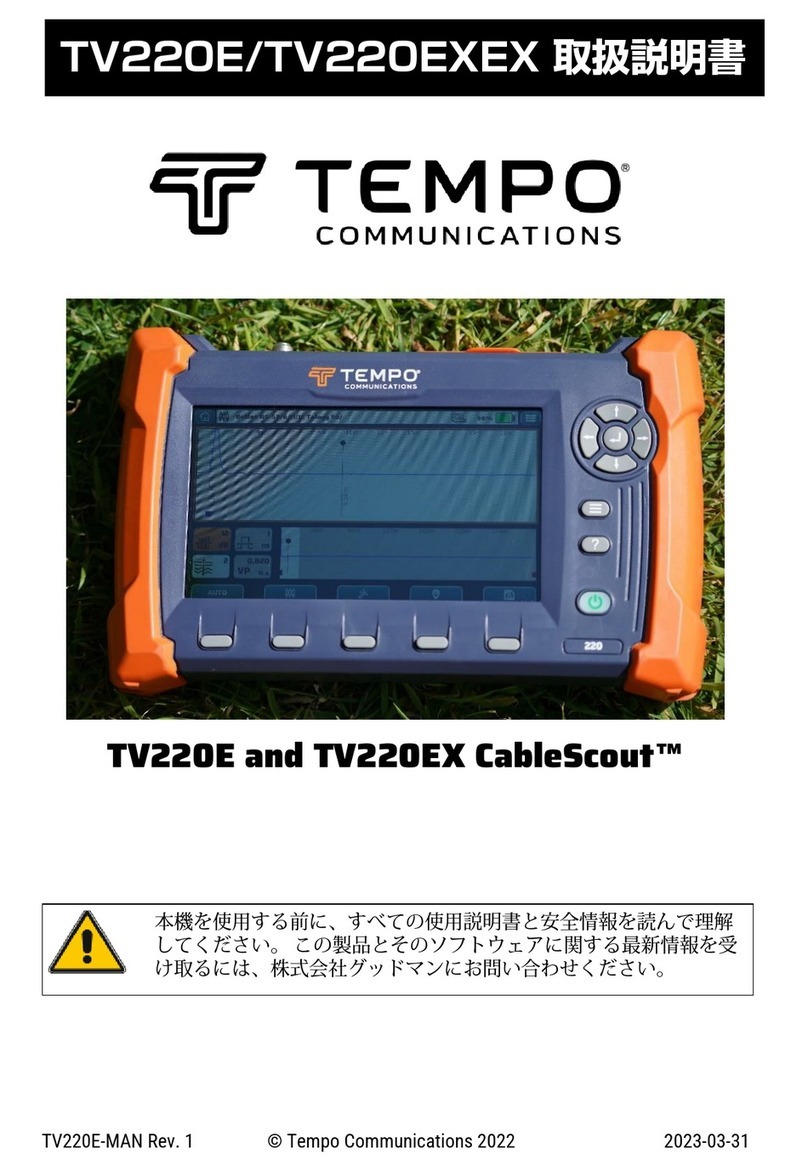HD2003 - 6 - V4.1
1.4 OPERATING MODES
The HD2003 has five operating modes:
♦RS232 and RS422 Serial Communication Mode (Chap. 3.2)
A connection over a RS232 or RS422 Serial line is established between a Host Computer and
only one HD2003 Anemometer. The Host Computer (Slave) is continuously receiving on its
RS232 serial port, Output Data digital strings, which are automatically supplied by HD2003
(Master), with its own frequency (configurable at a cadence from 1 to 3600s).
In this mode the Setup user interface can be managed from the computer.
♦RS485 ModBus – RS485 Multidrop Communication Mode (Chap. 3.3)
A network with ModBus RTU protocol over the RS485 line can be established, with a Master
(typically the PC or PLC) and one or more HD2003 anemometers together with other sensors,
all operating as Slave unit. Or a RS485 Multidrop network can be established between a Host
Computer and several HD2003 or HD52.3D anemometers (up to 32). The Host Computer
(Master) sends a command to the univocal address of a HD2003 (Slave). Only the
Anemometer which is identified by that address answers on request, giving the Output Data.
In this mode the command to activate the Setup user interface is available.
♦Digital High Frequency Mode (Chap. 3.2.3.11 and Chap. 3.3.2.3)
When in RS232 or RS422 serial communication mode, the Digital High Frequency functioning
can be set up, by obtaining Output Data of the quantities in RS232 or RS422 at a fixed
frequency of 50 Hz (baud rate=115200 and 4 measurement quantities).
When in RS485 Multidrop communication mode, a command for activating the Digital High
frequency can be sent. Then, any command for requiring a measurement can be sent to the
HD2003 up to a maximum frequency of 50 Hz (baud rate=115200 and 4 measurement
quantities).
♦Analog Output Mode (Chap. 3.4)
All measurement quantities can be configured to be converted into 5 analog outputs in current
or voltage, available in different measurement ranges, with a refresh of 1Hz. This mode is
always active, combined with the RS232 Serial, RS422, AoXnd and RS485 Multidrop modes.
When on Digital or Analog High Frequency mode, the 5 analog outputs are still available with a
refresh of 1Hz.
♦Analog Output Extended Mode (AoXnd) - Analog High Frequency ( Chap. 3.5 )
A single HD2003 Anemometer (Master) sends spontaneously digital strings of command over
his RS485 serial line directly connected to a remote module (Slave) ICP DAS I-7024 ®
(provided on Request). There are 4 extended analog outputs, voltage or current, to the
output terminals of the module, related to the measured quantities requested. Up to 3 ICP DAS
I-7024® modules can be connected, for a maximum total of 12 extended analog output. In
normal operation, cadences are settable from 1 to 3600s of update of the analog outputs, that
is to say a maximum frequency of 1Hz.
Under this mode, it is possible to get analog outputs at a considerable distance from the place
of installation of the HD2003, up to 1200m, even in routes subject to high electromagnetic
interference. The analog signals to the output terminals of the module, placed in proximity of
the acquisition device (such as the data logger DeltaOHM HD32MT.1), are electrically insulated
and are not subject to disturbances and interference in the electrical path forming, as it
happens in the analog signals that come directly from anemometer and have a long way
before reaching acquisition device.
Under this mode of AoXnd communication, the High Frequency Analog operation can be set, by
getting the analog output of the measuring quantities needed, at a frequency of 5Hz to 20Hz,
depending on the baud rate of the digital strings of command over the RS485 line.
The Serial RS232, RS422, RS485 ModBus RTU, RS485 Multi-drop and AoXnd
Communication modes are alternative: only one of them can be active. Their activation is
obtained via software (see Chap. 3.2.3.9), subsequently switching the HD2003 off and on. It is
always possible to return to RS232 Serial mode by providing a suitable command when
switching the HD2003 on.




















